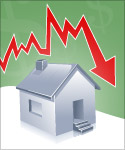 The first quarter of 2013 is almost over and so far, a few trends have emerged in real estate. These trends are not set in stone, nor can we be sure that they will continue on the same trajectories throughout the rest of the year. As with any other major part of the economy, much of real estate depends on external factors such as employment, interest rates, and general economic conditions.
The first quarter of 2013 is almost over and so far, a few trends have emerged in real estate. These trends are not set in stone, nor can we be sure that they will continue on the same trajectories throughout the rest of the year. As with any other major part of the economy, much of real estate depends on external factors such as employment, interest rates, and general economic conditions.
With that being said, the first quarter of 2013 has established a few trends in the national market that extend into regional and local markets and could point to broader movement throughout the rest of the year.
Home Prices Are Rising – For the Most Part
After five years of continually-falling prices, home values are starting to pick up in many parts of the country.
According to the S&P Case-Shiller Index, prices rose by 7.3% from the end of 2011 to the end of 2012. They are now roughly halfway to what they were in 2006 at the market’s peak. The market with the largest one-year change was Phoenix (23%); the market with the lowest one-year change was New York (-0.5%).
This doesn’t mean that housing prices have risen in 2013 – data for a national figure isn’t available yet – but we can assume that they have. What these numbers indicate is a trend; housing prices are on an upward trajectory.
Barring some serious reversal of fortune in the market or economy, they’ll likely continue to rebound throughout the rest of the year.
Foreclosure Rates Are Falling
As proof that one factor of real estate impacts every other factor, foreclosure rates are falling while prices are going up. This isn’t unusual; foreclosures have an inverse relationship with prices, since distressed properties drag down housing values around them.
So far in 2013, foreclosure rates have fallen considerably from earlier figures. Last month, foreclosures fell by 25% from February 2012 – one of the largest yearly drops we’ve seen in the past five years. Of course, foreclosures actually increased monthly from January to February of this year by 2%, but on whole, they are lower now than they have been recently.
One potentially troubling data-point: foreclosure starts increased by 10% last month, after three months of decline. This doesn’t necessarily indicate a trend; the trend likely is that foreclosure starts will decline slowly but steadily over the next two years. Still, it is something to watch.
Home Sales Are Up By Volume
Home sales have also increased and are at three-year highs.
In February, sales increased by 0.8%. This represents an annual rate of 4.98 million units sold, which is the highest volume of homes sold since November, 2009 (which seems like a lifetime ago). Experts anticipated a level of five million units, but the number reported is still higher by 60,000 units than the previous month’s total.
Homes are selling faster, too; the average home took 74 days to sell, significantly better than 97 days in February, 2012.
More existing homes are selling, which is good news for a market that has been stagnant for such a long time. This trend could very well continue at least for the first half of the year; there is some question as to whether or not the market can keep up this pace through 2013. At any rate, sales volume isn’t expected to seriously drop over the next nine months.
New Home Starts Are Up Too
Finally, in addition to buying existing homes, people are beginning to build more homes as well. Housing starts for new homes rose by 0.8% to 917,000 units constructed (annualized). That is good news, since new home starts are such a powerful stimulus for the economy and have more of an economic impact than selling existing homes.
This is actually part of a trend that is fairly strong. Last year was the first year since 2005 in which housing actually contributed to GDP growth in the U.S. Since new homes create jobs and generate momentum for the economy, 2013 could continue that trend established last year and help replace some of the economic power the housing market supplied in years past.
Taken all at once, these trends suggest that the residential real estate market is picking up steam so far in 2013 and likely will, at the least, be as strong as 2012 was for a market that has been stagnant for far too long.



